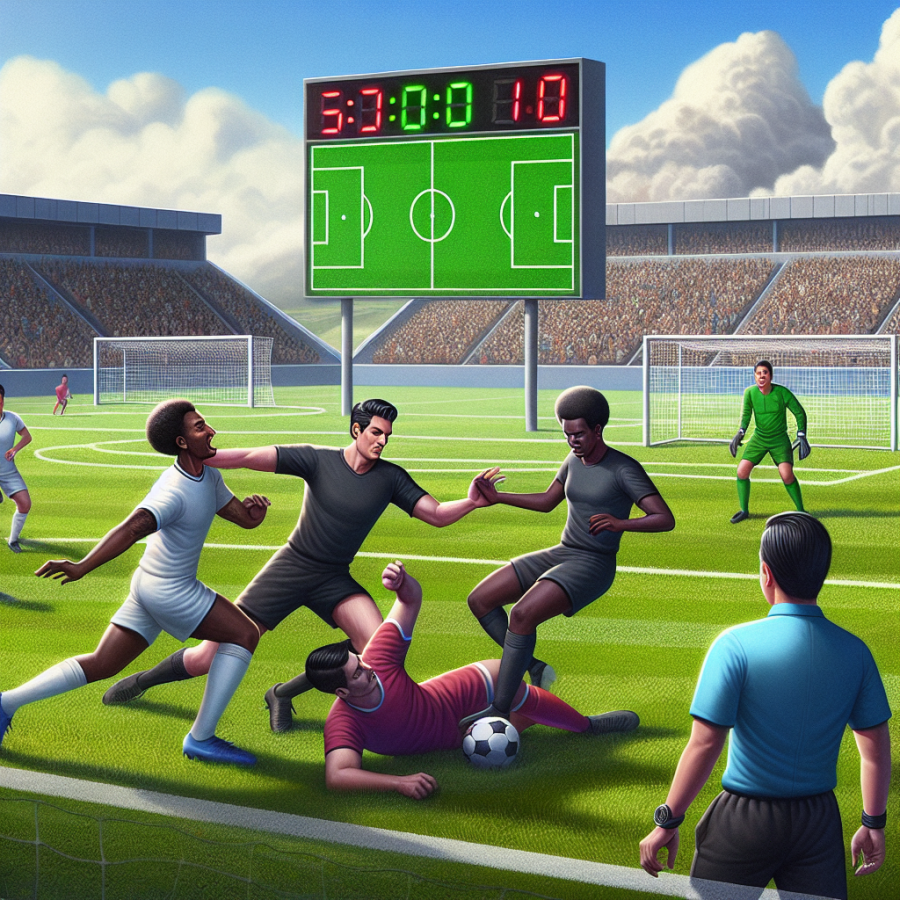Navigating Stoppage Time and Extra Periods: A Closer Look at How Soccer Matches Are Timed
Stoppage Time Explained
Soccer is unique in its approach to timing, with the clock continuously running throughout each half despite interruptions. This leads to the addition of 'stoppage time' at the end of each half, compensating for moments when the game was paused. The referee tallies this extra time based on various factors such as substitutions, injuries, goal celebrations, and any instance that disrupts the normal flow of play. Unlike many other sports, the exact amount of added time is at the referee's discretion and is signaled to players and spectators through a digital board displayed by the fourth official on the sidelines.
Calculating Stoppage Time
The process of calculating stoppage time is not an exact science. Referees must strike a balance between allowing for natural interruptions and maintaining the flow of the game. The calculation includes assessing the length of various stoppages. For instance, if a player is injured and requires on-field treatment, the referee estimates the time taken for medical staff to respond and play to resume. Similarly, the time utilized for substitutions or to retrieve a ball that has gone out of play is added to the stoppage time. This estimation aims to ensure that the active playing time reflects as closely as possible the regulation 45 minutes for each half.
The Role of Stoppage Time
Stoppage time plays a crucial role in soccer as it can be a pivotal period where games are won or lost. Teams often adjust their strategies during this time, either pressing for a winning goal or focusing on defending a lead. Fans and players alike feel the pressure of the ticking clock as they are well aware that a match's outcome can hinge on moments within these extra minutes. It is during stoppage time that some of the most dramatic and memorable moments in soccer history have occurred, underlining its importance in the sport.
Extra Periods and How They Work
In some soccer matches, particularly knockout stages of tournaments or cup competitions, the game must have a winner. If a match is tied at the end of regular time, it may go into extra periods, commonly known as extra time. This consists of two additional 15-minute halves, with a short break in between but no intermission akin to halftime. These extra periods are played to completion, regardless of the number of goals scored.
The Golden Goal and Its Replacement
Historically, a rule called the 'golden goal' was used whereby the first team to score in extra time would immediately win the match.
Read also:
Navigating the Unique Legal Landscape of Samoa
Breaking Down Soccer's 90-Minute Match: The Anatomy of Halves
Soccer, one of the most popular sports globally, has a unique structure to its 90-minute matches, which are divided into two halves of 45 minutes each. This bifurcation is not arbitrary; it serves several key purposes and adds to the strategic depth of the game. Here's a closer look at how these halves play out and their significance in the flow of a soccer match.
Understanding the Basic Structure
At the heart of soccer's time structure is the division of play time into two equal halves, each lasting 45 minutes. After the first half, there is a halftime break, which is typically 15 minutes long. This interval allows players to rest, rehydrate, and receive strategic instructions from their coaches.
Starting the Match
Every soccer game begins with a kickoff for the first half. The choice of which team kicks off is determined by a coin toss. The team that wins the toss can choose either to kick off or to decide which goal they will attack in the first half. The kickoff is also a ceremonial start to the match, and it sets the pace for the first half.
Tempo and Tactics
The opening minutes of the first half generally set the tempo for the game. Teams may start cautiously as they try to understand their opponents' tactics or come out aggressively in an effort to score an early goal. The way matches are played can vary widely during the first half, with some teams opting to conserve energy for a stronger finish or push hard from the start to gain an early advantage.
Adjustments and Adaptations
The halftime interval serves as a crucial period for making tactical adjustments. Coaches assess the first half's performance and may decide to make substitutions to alter their team's dynamic. Players can receive treatment for injuries and prepare mentally for the second half. The strategies devised during this break can significantly affect the outcome of the match.
Second Half Dynamics
After halftime, teams switch sides, and play resumes with another kickoff. The second half often unfolds differently from the first as players become fatigued and substitutions introduce fresh legs and potentially new tactics. The team trailing on the scoreboard might adopt a more attacking approach, while the leading team could become more defensive to protect their lead.
Closing Stages
The last 15 to 20 minutes of the match are frequently the most intense. With time running out, the urgency increases, especially for a team needing to score to avoid defeat.




